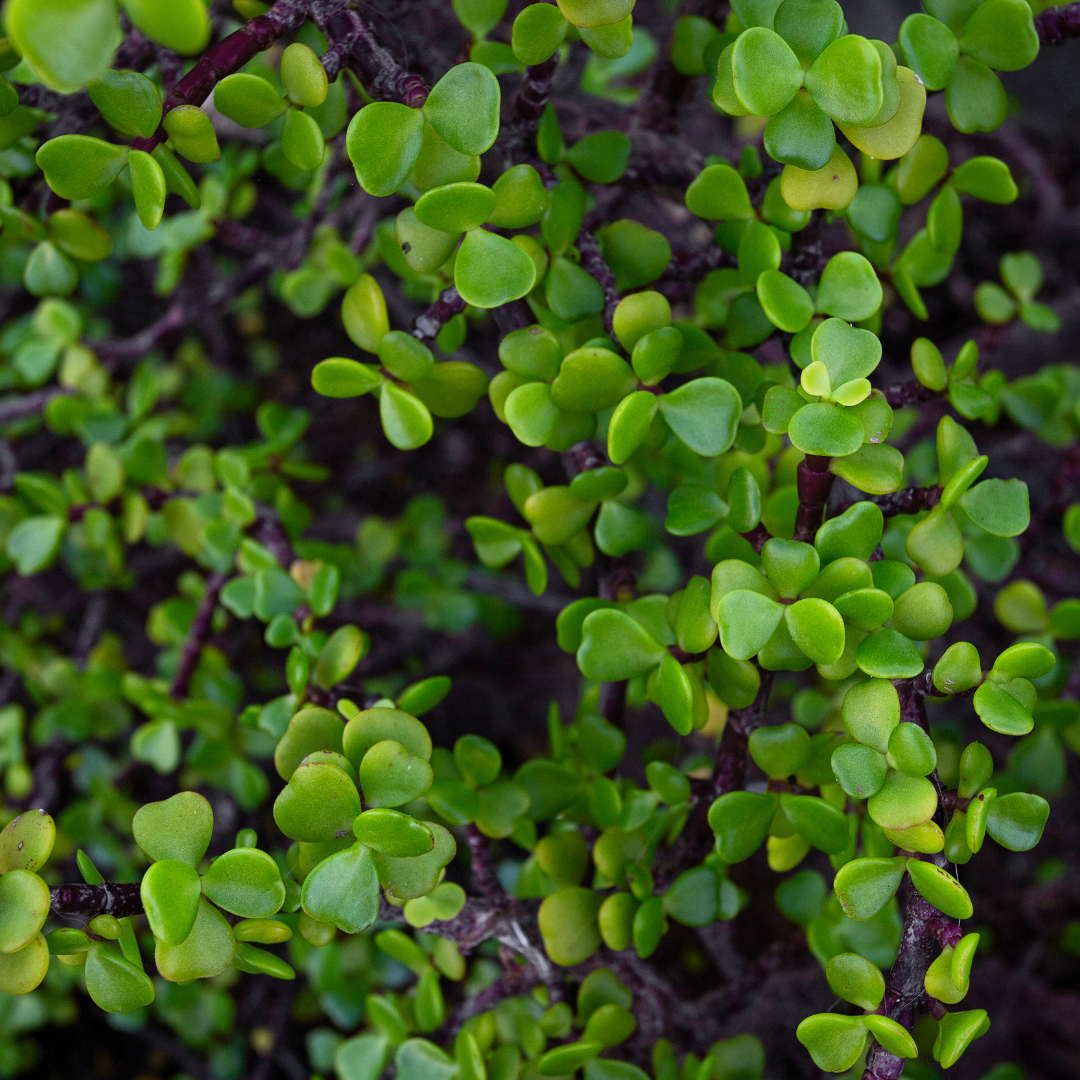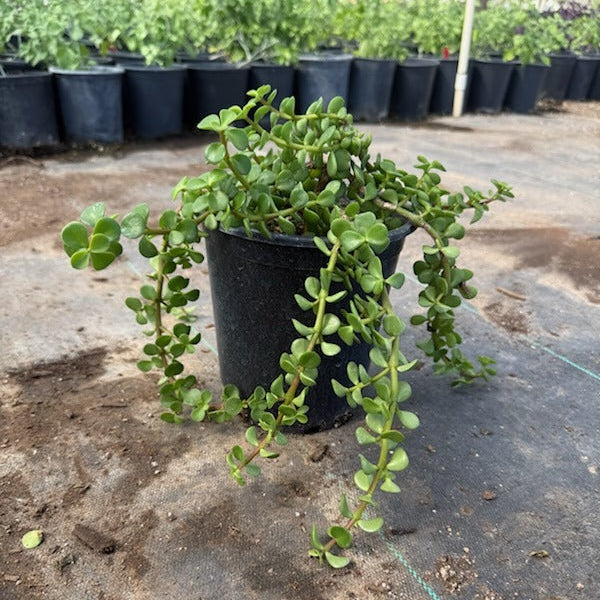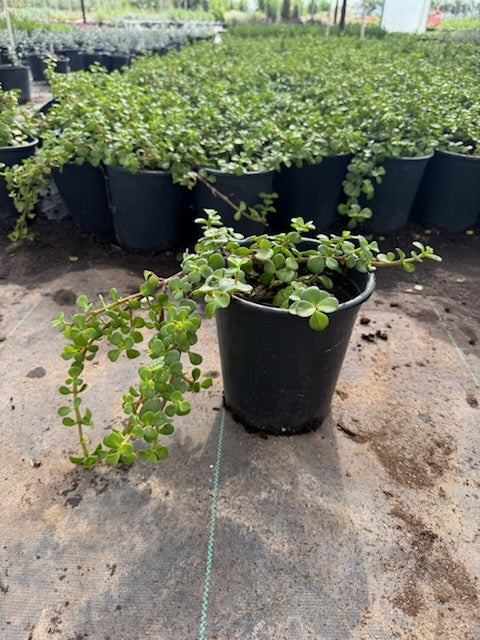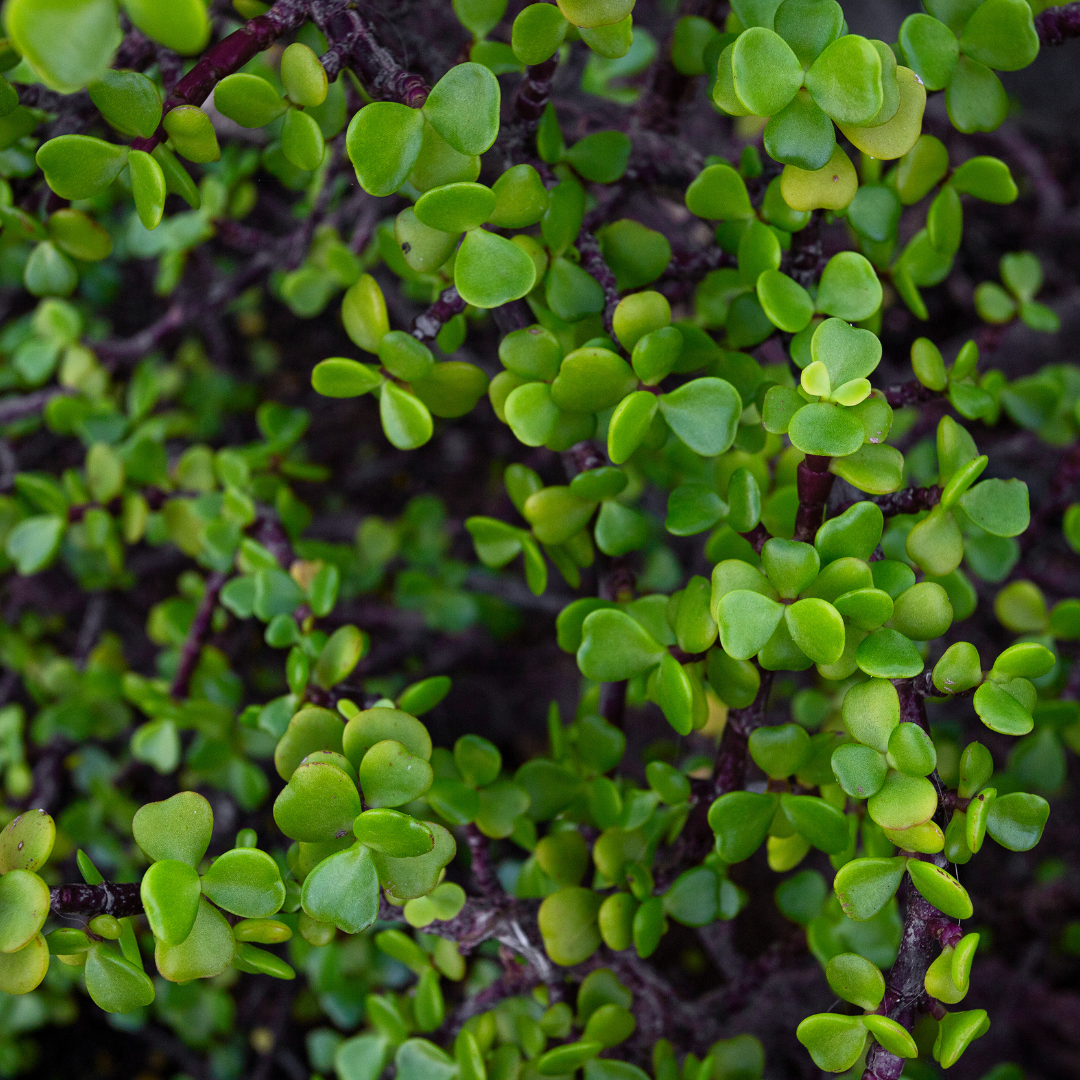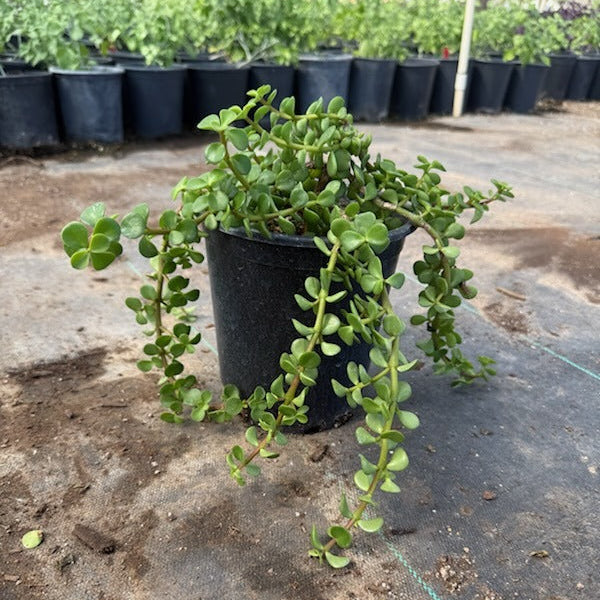My Store
Elephant's Food
Elephant's Food
Couldn't load pickup availability
Plant Type: shrub
Plant Height: 8-15 feet
Spread: 8-15 feet
Flower Color: pink
Sun Exposure: Full Sun or Partial Shade
Elephant Food – The Perfect Water-Wise Succulent for Arizona Gardens
Elephant Food (Portulacaria afra) is a unique, drought-tolerant succulent that thrives in Arizona’s hot and arid climate, making it an ideal choice for xeriscaping and sustainable landscaping. Known for its compact, jade-like leaves and low-growing habit, this succulent brings an exotic, lush charm to desert gardens.
Distinctive Features of Elephant Food
The most striking feature of Elephant Food is its bright green, glossy leaves, which resemble those of the jade plant. These small, rounded leaves grow along reddish-brown stems, creating an attractive ground cover or accent plant. Native to South Africa, Elephant Food has earned its name as a favorite forage for elephants in the wild, though in Arizona landscapes, it serves as a durable, ornamental succulent.
Landscape Uses for Elephant Food in Arizona
-
Ground Cover or Border Plant: With its compact growth, Elephant Food is excellent for filling in open spaces, adding a lush, green touch to pathways, rock gardens, and borders.
-
Accent in Xeriscape Gardens: Its resilience and low water needs make it a standout choice for water-wise gardens, adding texture and visual interest without increasing water consumption.
-
Container Planting: Elephant Food also thrives in containers, perfect for patios, terraces, or as a low-maintenance indoor plant.
Care Tips for Growing Elephant Food in Arizona’s Climate
Adapted to full sun and well-draining soil, Elephant Food requires minimal watering once established, making it a perfect match for Arizona’s dry climate. Occasional watering during extreme drought periods will help maintain its vibrant green color. This succulent is hardy and low-maintenance; light pruning can help control its shape and promote fuller growth.
Why Elephant Food is Ideal for Arizona Landscapes
With its jade-like leaves, compact growth, and incredible drought tolerance, Elephant Food is a top choice for Arizona gardeners looking to create a sustainable and visually appealing landscape. Its ease of care, resilience, and exotic appeal make it a favored choice for eco-conscious landscapers and homeowners alike.
Three Timbers Installation Guide (Feel Free to Follow): Elephant Food
Planting Guide:
- Location: Full sun (at least 6 hours of direct sunlight daily for optimal growth)
- Soil: Well-drained, sandy or rocky soil (slightly acidic to neutral soil preferred)
- Spacing: Space plants 3-5 feet apart to allow for optimal growth and air circulation
- Planting Depth: Plant at the same depth as the root ball, ensuring the top of the root ball is level with the surrounding soil surface
- Support: Elephant Food grows as a low shrub and requires no staking
Watering Guide:
Watering After Planting:
- Initial Watering: Water thoroughly immediately after planting to saturate the root ball and surrounding soil
- Frequency: Water every 3-4 days for the first 2-3 weeks to help establish the root system
- Watering Amount: Provide 1 inch of water per session for deep watering
When is the Plant Established?
- Timeframe: Elephant Food is considered established after 3-4 months when the roots have spread into the surrounding soil
Watering Once Established:
- Summer: Water every 10-14 days during the hotter months. If temperatures exceed 100°F, increase watering to every 7-10 days. Provide 2-3 inches of water per session.
- Winter: Water every 4-6 weeks during the cooler months, depending on rainfall.
Drip Irrigation Setup:
- Placement of Emitters: Place the drip emitters 12-18 inches away from the base of the plant to ensure deep watering
- Flow Rate: Use emitters with a flow rate of 1-2 gallons per hour for deep watering
- Number of Emitters: 1 emitter per plant for even watering
- Adjusting Frequency: Increase watering frequency to every 7-10 days in summer, and reduce to every 4-6 weeks in winter
Share
